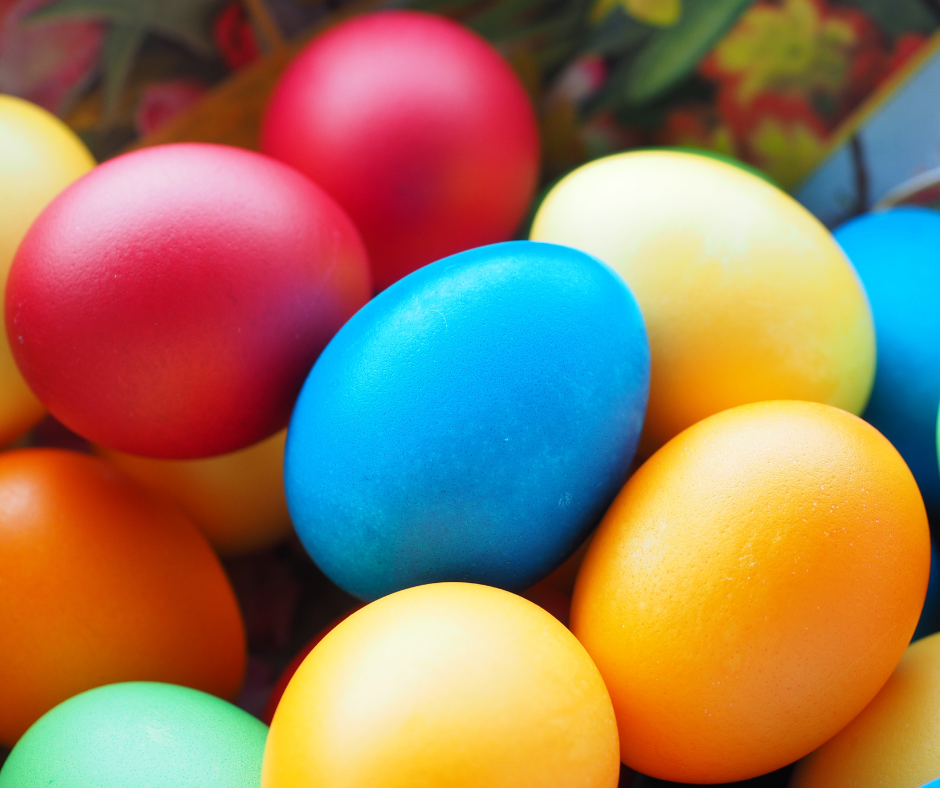Easter’s symbolic colors and meanings: Easter is a jubilant celebration. The arrival of spring heralds the blooming of flowers and the widespread use of a select palette in the religious celebrations surrounding Easter. Several hues carry significant symbolic weight in Christian traditions. They are commonly used in Easter decorations.
As early as the 1100s, when Pope Innocent III described the appropriate colors during specific liturgical proceedings, people began associating certain colors with those events. Many of these hues are widely employed in modern Easter celebrations. Learn the meanings of the seven Easter paint color ideas.
Easter’s symbolic colors and meanings: A Pink or a Rose
Colors in the pink spectrum also have significant meaning at Easter. The color pink is associated with hopeful, happy new beginnings. This shade of pink brings to mind the color of the sky just before sunrise.
Laetare Sunday, the fourth Sunday of Lent, occurs 21 days before Easter and is traditionally associated with the color rose in the Christian church. Laetare, from the Latin for “to rejoice,” is the name of the Sunday before Easter that serves as a reprieve from the penitential season of Lent. Rose-colored altar cloths and vestments are worn on Laetare Sunday.
Purple
Ash Wednesday marks the beginning of Lent, 40 days of religious observance leading up to Easter. That is when Christians fast, repent, give alms, and pray.
Vestments, the outer garment worn by priests, ministers, and clergy, are traditionally purple this season. Many Christian churches also use purple cloth to decorate their alters, lecterns, and pulpits. In this context, purple’s symbolic meaning includes atonement, remembrance, royal status, and the abundance of the spirit.
Jesus’ passion and death are foretold in John 19:2, along with purple. And the soldiers made him a crown of thorns and placed it atop his head, dressing him in a purple robe.
A purple robe was used to ridicule Jesus as the King of the Jews. Because it required the most time and money to produce, purple was reserved for Roman nobility.
Easter’s symbolic colors and meanings: Red

In the context of Easter paint colors ideas, the color red symbolizes the blood of Jesus Christ that was shed for the benefit of all people. As such, it represents devotion, pain, and selflessness. Red is the traditional color for Easter eggs in the Greek Orthodox Church.
Holy Week begins on Palm Sunday and ends on Easter Sunday, symbolized by red. On Palm Sunday, Christians remember Jesus Christ’s triumphal entry into Jerusalem. It marked the beginning of Holy Week, culminating in celebrating his death and resurrection.
As a commemoration of Jesus’ entry into Jerusalem, as described in John 12: 12–13, the disciples traditionally bless and distribute palm branches to worshippers on this day. “The next day, many of those who had come for the feast, having heard that Jesus was on his way to Jerusalem, took branches from palm trees and went out to meet him, shouting, “Hosanna! Blessed is the King of Israel that cometh in the name of the Lord!”
Pentecost, Easter’s 50th and final day, also features red as a symbol of the consuming Holy Spirit. After Jesus’ death, resurrection, and ascension, the Holy Spirit descended upon the Apostles and other disciples.
Pentecost Sunday is celebrated as the birth of the Christian Church, and red is traditionally used to decorate churches and worn by clergy and laypeople.
Easter’s symbolic colors and meanings: Black
In addition to a color association with death and mourning, black also has spiritual connotations with fasting, mercy, and repentance—all of which are fitting themes for the Lenten season.
Fasting, almsgiving, church, prayer, and vigil services are all common ways of commemorating Good Friday, the Friday before Easter.
Green
The color green means growth and renewal. This is a fitting symbolism for the Easter season, marked by ideas of rebirth, remembrance of the dead, and new beginnings. In the Christian calendar, green represents the ordinary time between the two major seasons of Advent (before Christmas) and Lent (before Easter and Pentecost).
Easter’s symbolic colors and meanings: Gold
Shining gold during Easter symbolizes glory and triumph. We celebrate Jesus’ resurrection and victory over death during this time. Vestments and church decorations for Easter services often feature a gold and white color scheme.
White
The joyous culmination of the Easter season is the resurrection of Jesus Christ, and the color white represents these themes. The Easter lily, a white flower representing Christ’s innocence, and the trumpet proclaiming Jesus’ resurrection are typical Christmas decorations in churches and homes.
It is also traditional to wear white on Monday, Thursday, the day before Good Friday, to remember the Lord’s Supper.
Please take a look at our work on Facebook

